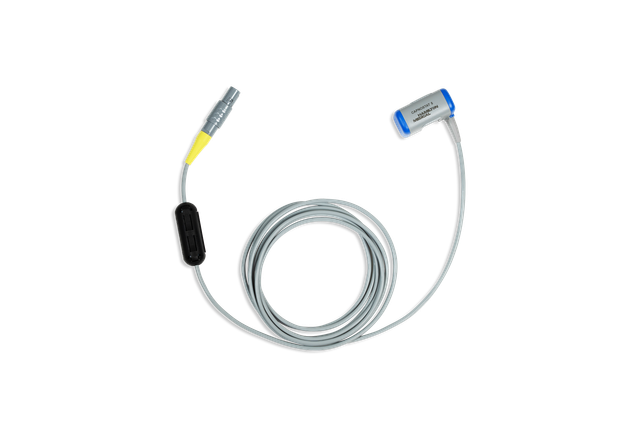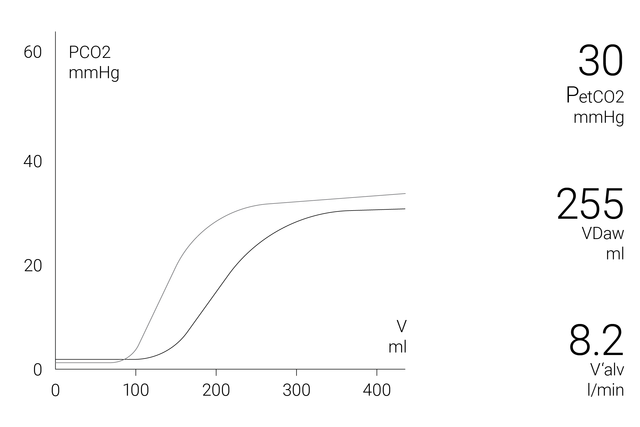
容积二氧化碳图的时相、形状和曲线形态和基于衍生计算的测量可以告诉您下列重要信息:

在我们的呼吸机上,使用病人气道近端的 CAPNOSTAT-5 主流式 CO2 传感器测量 CO2。
CAPNOSTAT-5 传感器针对呼气末二氧化碳分压 (PetCO2) 以及在 150 次/分钟下所有呼吸频率的清晰、准确的二氧化碳图提供准确的测量。

显示屏上的容积二氧化碳图窗口显示准确的定量信息作为近端流量和近端 CO2 数据的结合,例如:
为了解更多关于病人状况的综合分析,可获得以下参数的 72 小时趋势图(或 HAMILTON-S1/G5 呼吸机的 96 小时趋势图):
为了使您一目了然,Hamilton Medical 哈美顿医疗公司呼吸机在二氧化碳监测窗口提供了所有 CO2 相关性数据的概览。
让我们引导您了解容积二氧化碳图的所有优点,并看看它的实际应用。预订我们的专家免费的个人演示: